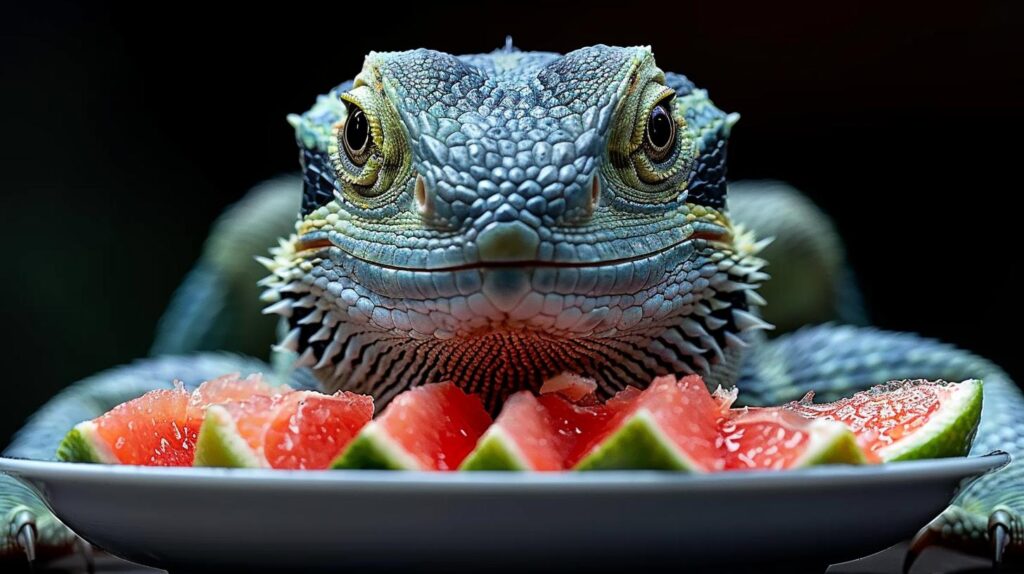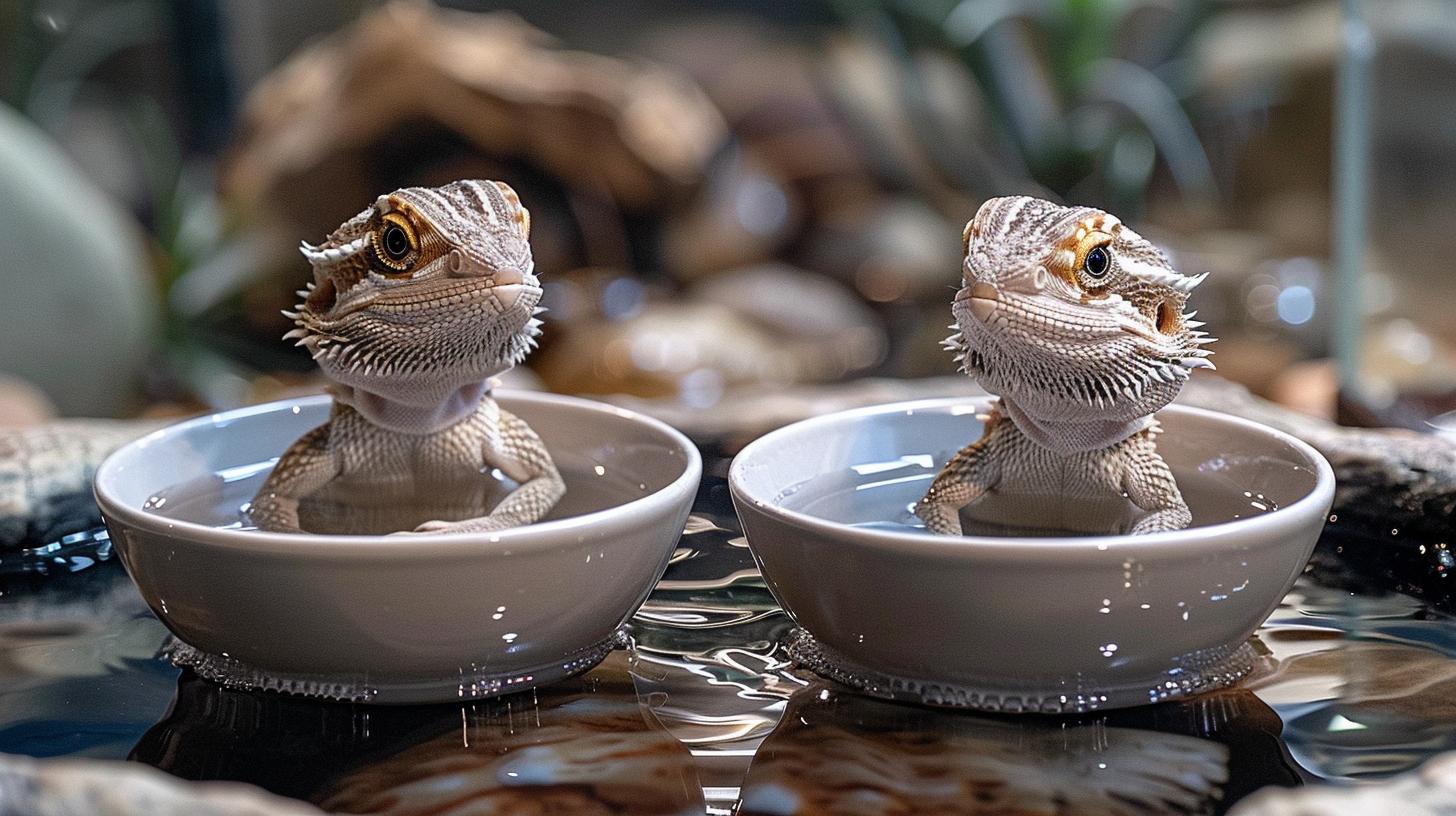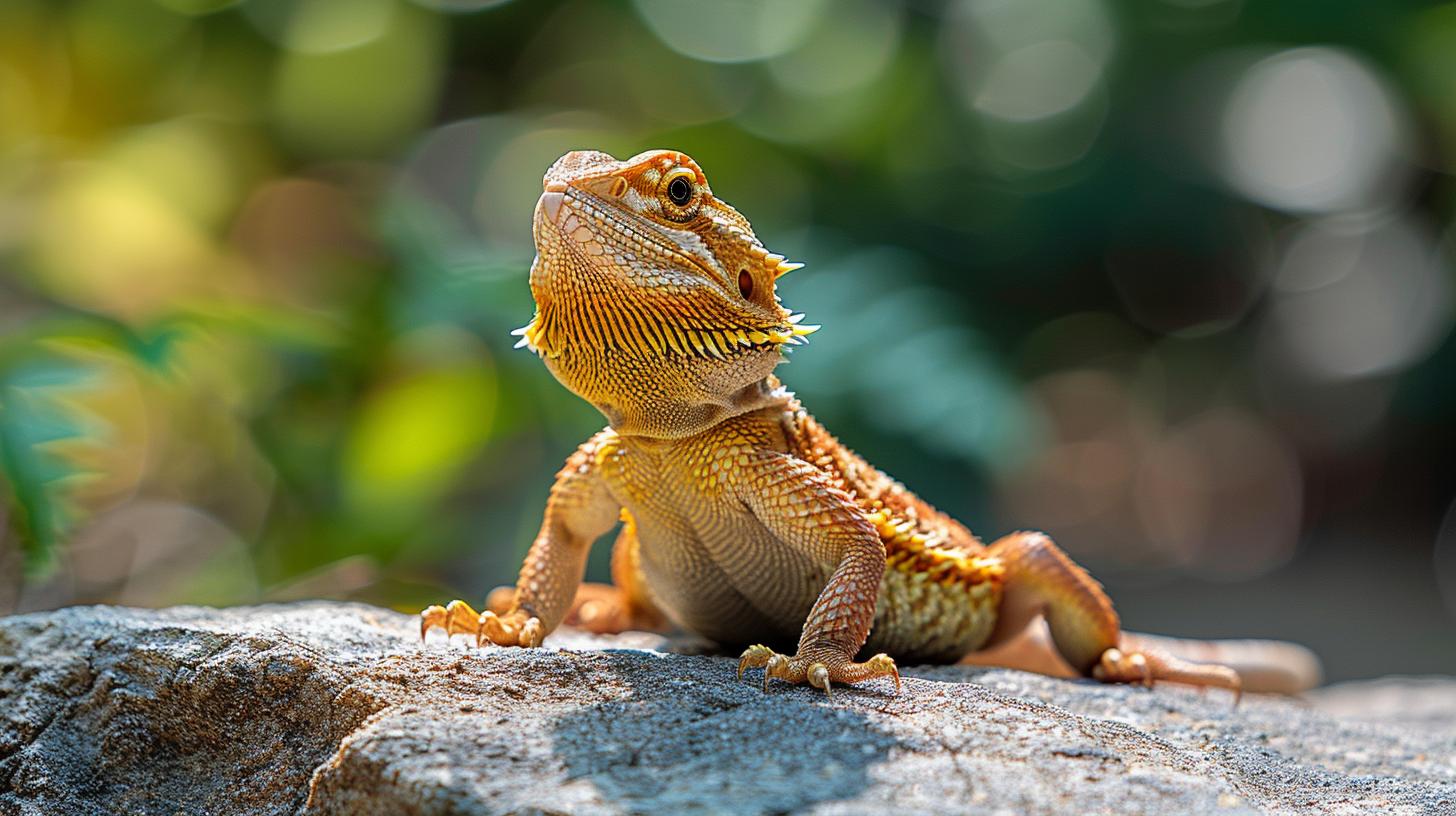What's the Best Feeding Schedule for Bearded Dragons?

Understanding the Nutritional Needs of Bearded Dragons
Crafting the right bearded dragon feeding schedule is essential for their health and well-being. As unique reptiles that have captivated the hearts of pet enthusiasts worldwide, bearded dragons require a specific diet to thrive. The foundation of a healthy life for these creatures begins with understanding their nutritional needs. This understanding forms the core of ensuring they lead long, happy lives under your care.
Bearded dragons are omnivores, meaning their diet should consist of both plants and insects to mirror the varied diet they would have in the wild. However, it's not just about what they eat but how they eat it. The balance between plant-based foods and proteins, along with knowing the ideal quantities and frequencies, is critical. This guide focuses on dissecting these dietary requirements to help you craft an optimal feeding schedule for your pet.
The nutritional needs of bearded dragons change as they grow from hatchlings into adults. This growth journey drastically affects what should be included in their diet at different stages of their lives.
Identifying these changes is paramount when designing a bearded dragon feeding schedule that suits your pet's current stage. Younger dragons need more protein from insects to support their rapid growth, while adults thrive on a diet heavier in vegetables, indicating a significant shift in nutritional focus as they age.
A closer look into their dietary preferences shows that variety not only prevents boredom but also ensures a broad spectrum of vitamins and minerals are ingested, mimicking the natural diversity they would experience in their native habitats. This variety includes leafy greens, vegetables, and occasional fruits mixed with suitable insects like crickets or mealworms - each component bringing its unique nutritional value to the table.
Understanding these aspects helps frame a comprehensive approach towards meeting your bearded dragon's dietary needs efficiently through a well-structured feeding schedule tailored just for them; laying down the essentials before diving deeper into specifics like balance, frequency, supplements, hydration, and adjustments over time as your beloved pet grows.
The Importance of a Balanced Diet
When it comes to maintaining the health and happiness of your bearded dragon, understanding the importance of a balanced diet cannot be overstated. A well-rounded diet not only supports their physical growth but also enhances their overall well-being. As reptile enthusiasts might know, the dietary needs of bearded dragons encompass a variety of food types, each offering distinct nutritional benefits.
In essence, the diet of a bearded dragon should include a mix of live insects, vegetables, and occasional fruits. Live insects such as crickets, mealworms, and dubia roaches constitute a primary source of protein which is critical for their growth, especially in younger dragons.
On the other hand, leafy greens like kale, collard greens, and mustard greens provide essential vitamins and minerals that aid in digestion and bone health. While fruits can be given as an occasional treat due to their sugar content.
- Live Insects: Crickets, mealworms, dubia roaches
- Vegetables: Kale, collard greens, mustard greens
- Fruits: Apples (in moderation), blueberries
Integrating these food groups into your bearded dragon feeding schedule is key to avoiding nutritional deficiencies that could potentially lead to health issues down the line. It's not just about providing them with enough food; it's about ensuring each meal contributes positively to their dietary needs.
However, grasping the ideal balance requires attention to *age-specific dietary requirements*. For instance, juvenile dragons demand more protein-rich foods in comparison to adults due to their rapid growth rate. This difference underscores why understanding the nuance in dietary needs is fundamental for crafting an appropriate bearded dragon feeding schedule that promotes optimal health at every life stage.
As we merge deeper into discussing how often you should feed your bearded dragon in subsequent sections, remember that adapting these guidelines based on individual health and lifestyle factors will further bolster your pet's longevity and vitality. Transitioning from this foundational knowledge on what constitutes a balanced diet for bearded dragons sets the stage for delving into more intricate elements such as frequency of meals and supplement incorporation-critical components in thriving through all phases of their lifespan.
Decoding the Bearded Dragon Feeding Schedule
Understanding the intricacies of a bearded dragon feeding schedule is essential for maintaining the health and well-being of these popular reptilian pets. An optimal diet schedule isn't just about what foods to provide but also when and how often this nourishment is offered. This balance ensures that bearded dragons receive all necessary nutrients without overfeeding, which can lead to obesity and other health issues.
The age of your bearded dragon plays a pivotal role in determining their dietary needs, with younger dragons requiring more frequent feedings of protein-rich foods to support their rapid growth and adult dragons needing a balanced mix of insects and vegetables to maintain their health. In this section, we'll break down the recommended feeding schedules based on the age of your bearded dragon, offering insights into creating a nutritional plan that supports their development at every stage.
Baby Bearded Dragons: Frequent Feedings
For baby bearded dragons, under six months old, a diet primarily consisting of insects like crickets and mealworms is pivotal for their growth. These young reptiles should have access to live food at least three to five times daily due to their high metabolism and the necessity for protein in developing strong bones and muscles.
However, incorporating finely chopped vegetables early on encourages them to adapt to a varied diet as they mature. At this stage, the bearded dragon feeding schedule must cater specifically to promoting growth while ensuring they do not become overweight from excessive protein intake.
Juvenile Bearded Dragons: Transitioning Diets
As bearded dragons transition into their juvenile phase (from six months up to 18 months), their diet undergoes significant changes as well. While protein remains an important component of their daily meals, the frequency at which they consume insects should gradually decrease. Introducing a broader variety of vegetables alongside calcium-rich feeder insects becomes crucial in fostering balanced nutrition.

A suggested feeding routine involves offering live feed twice per day coupled with fresh greens available throughout the day for grazing. This period marks a critical point where monitoring weight and adjusting portions accordingly ensure juveniles grow into healthy adults without excess fat.
Adult Bearded Dragons: Maintenance Feeding
Upon reaching adulthood after 18 months, bearded dragons' dietary needs stabilize significantly compared to their younger counterparts. Their feeding schedule shifts focus towards maintaining optimal health rather than supporting rapid growth-signifying reduced protein requirements.
Adult dragons thrive on a ratio favoring plant-based foods; ideally, 80% vegetables and fruits combined with 20% insect-based proteins suffice for most adults' nutritional needs. Live food offerings can thus be limited to every other day or even less frequently depending on individual activity levels and health status while continuing daily vegetable offerings to support stable digestion.
Transitioning effectively through each phase by adjusting the bearded dragon feeding schedule in accordance with age not only caters directly to their changing dietary demands but also lays down a foundation for long-term vitality.
A Closer Look at How Often to Feed Your Bearded Dragon
Determining the optimal bearded dragon feeding schedule largely hinges on understanding their age and size. Just like in humans, the dietary needs of bearded dragons evolve as they transition from juveniles to adults. Grasping this concept is vital for ensuring that your pet receives the right amount of nutrients to support healthy growth and development.
For baby bearded dragons, up to around 4 months old, feeding should occur three times a day. Babies have a high metabolic rate and require ample protein to fuel their rapid growth, making insects an essential part of their diet during this phase. As they mature into juveniles (4-12 months old), you can adjust feedings to twice daily.
This adjustment reflects their slightly slowed growth rate but continued need for a diet rich in proteins. Offering a variety of insects such as crickets, waxworms, and appropriately sized vegetables ensures they get balanced nutrition.
Once bearded dragons reach adulthood (beyond 12 months), feeding can be reduced further to once every day or even every other day depending on their specific health and activity level. Adult diets should shift focus towards more vegetables than insects, reflecting their natural diet progression and need for lower calorie intake as their metabolism slows. Incorporating leafy greens like collards, mustards, and turnip greens alongside occasional fruits will keep them healthy without overfeeding.
- Babies (0-4 months): Feed three times daily with a focus on insects.
- Juveniles (4-12 months): Adjust feedings to twice daily, maintaining a blend of insects and vegetables.
- Adults (12+ months): Once daily or every other day with an emphasis on vegetables.
Adapting the bearded dragon feeding schedule based on these life stages supports appropriate growth while preventing obesity-a common issue in captive dragons that can lead to serious health problems. Regular weight checks are recommended to monitor your pet's condition closely and make dietary adjustments as needed.
It's also essential not verbally conclude the discussion here; understanding *supplements* and *hydration* plays an equally critical role in composing a comprehensive care regimen for bearded dragons-leading us naturally into enhancing the nutritional landscape with necessary supplements and optimal hydration tactics next.
Supplements and Hydration
A well-structured feeding regimen must go beyond mere food items to include essential supplements. Calcium is paramount for bearded dragons, especially for juveniles who are more susceptible to metabolic bone disease due to calcium deficiency.
A daily dusting of their food with a balanced calcium supplement, preferably one without phosphorus, is recommended as it aids in bone growth and maintenance. Moreover, incorporating a vitamin D3 supplement periodically supports the absorption of calcium, which is particularly crucial for dragons living indoors with limited exposure to natural sunlight.
Hydration equally plays a critical role in a bearded dragon's diet. Despite residing in arid environments in the wild, these creatures still need regular access to water. Offering fresh water daily either through a shallow dish or by misting them gently can encourage hydration.
Some dragons might not drink from the dish immediately; however, they gradually learn over time or get their required moisture from the vegetables in their diet. It's worth noting that overly wet diets can lead to diarrhea while too dry might cause dehydration-both scenarios underscoring the importance of a balanced approach.
| Supplement | Frequency |
|---|---|
| Calcium without Phosphorus | Daily |
| Vitamin D3 | Once or Twice Weekly |
Incorporating supplements into your bearded dragon feeding schedule should follow vet recommendations tailored to your pet's specific needs and conditions like age, weight, and any health concerns they may have. Besides ensuring *adequate nutrition* and *hydration*, monitoring your bearded dragon for signs of over or under-supplementation can assist in making necessary dietary adjustments efficiently. This attention to detail reinforces optimal growth patterns and promotes vitality among these exotic pets.
As we delve deeper into creating an ideal environment for our scaly companions through proper diet management.
Tips for Implementing the Ideal Bearded Dragon Feeding Schedule
Navigating the dietary needs of bearded dragons can often feel like walking through a maze without a map, especially for new owners. Given the unique nutritional requirements of these reptiles, crafting the perfect bearded dragon feeding schedule is crucial to their health and vitality. Implementing this schedule effectively requires attention to detail, an understanding of their diet, and a commitment to consistency. Remember, what you feed your bearded dragon is just as important as when you feed them.

The challenge often lies not in identifying what constitutes a balanced diet but in integrating these dietary requirements into a manageable and routine feeding schedule. A properly maintained bearded dragon feeding schedule ensures that your pet receives all the necessary nutrients within ideal time frames. This practice supports optimal growth, health, and behavior. Let's delve into some practical tips that can help streamline this process and make it more efficient for both you and your beloved pet.
Establishing Routine Times
One of the first steps in adhering to an effective bearded dragon feeding schedule involves setting specific times for meals. Just like humans, bearded dragons benefit from regularity; it helps regulate their internal clock and supports better digestion and nutrient absorption. For young dragons requiring multiple feedings throughout the day due to their rapid growth phases, try allocating meal times during the morning, afternoon, and early evening to mimic natural hunting patterns.
Portion Control Is Key
Understanding portion sizes based on age group plays an indispensable role in optimizing your beardie's diet without overfeeding or underfeeding them. Juveniles will consume more protein-rich foods like insects compared to adults who need larger quantities of vegetables. Quantify food items according to body size; typically, stomach-sized portions of greens with appropriate insect servings depending on activity level work well to maintain balance.
Monitoring and Adjustments
Keep an eye on how your bearded dragon responds to its diet over time. A lacklustre response or noticeable weight gain might indicate it's time to adjust meal frequency or portion sizes accordingly. Record these observations as they can provide invaluable insights when visiting a veterinarian or considering dietary shifts. Regularly evaluating the effectiveness of your bearded dragon feeding schedule will ensure that it remains aligned with your pet's changing nutritional needs as they age.
Implementing an optimal feeding strategy for bearded dragons may initially seem daunting. However, by establishing routine meal times.
practicing controlled portion sizing based on age and growth rate, along with regular monitoring and adjustments if necessary, you'll create a nurturing environment that promotes the overall wellbeing of your pet.
Moving Forward
As we conclude our comprehensive exploration of the optimal bearded dragon feeding schedule, it becomes clear that understanding and adapting to your pet's changing needs is key to ensuring their health and happiness. From deciphering the complex nutritional requirements of these fascinating reptiles to recognizing the significance of a varied diet and proper hydration, every detail plays an indispensable role in nurturing a thriving bearded dragon.
Reflecting on our journey from initial nutritional insights to practical feeding tips underscores the importance of continuous learning and adjustment as your bearded dragon matures.
Incorporating the right blend of supplements, understanding the frequency of meals appropriate for each life stage, and staying informed about dietary best practices are all critical components for crafting a feeding schedule that supports robust growth and vitality. Remember, as your bearded dragon ages, its dietary needs will evolve.
Staying attuned to these changes is paramount, allowing you to modify its diet accordingly. This proactive approach not only ensures that your bearded dragon enjoys a high-quality life but also strengthens the bond you share with your scaly companion.
Are you eager to deepen your knowledge and discover more about keeping your bearded dragon in peak condition? We invite you to continue enriching your understanding through our extensive collection of articles.
Whether you're curious about specific care techniques or looking for in-depth guides on reptile health, our website is brimming with authoritative content designed to support you at every stage of your pet-rearing journey. Let's venture together into a world where well-informed pet ownership leads to happier, healthier reptiles.
Frequently Asked Questions
Can You Overfeed a Bearded Dragon?
Yes, you can overfeed a bearded dragon, leading to health issues such as obesity and nutritional imbalances. These reptiles benefit from a balanced diet tailored to their age, with juveniles requiring more protein and adults benefiting from more vegetables. Paying attention to portion sizes and feeding frequency is key to preventing overfeeding.
How Long Can a Bearded Dragon Go Without Eating?
Adult bearded dragons can safely go for up to two weeks without eating due to their efficient metabolism, especially during brumation (a period of dormancy similar to hibernation). However, this doesn't apply to younger dragons, who need regular feeding schedules due to their fast growth rate.
If an adult bearded dragon hasn't eaten for an extended period outside of brumation, it could indicate a health issue, necessitating a visit to the vet.
How Do I Know if My Bearded Dragon Is Hungry?
Signs that your bearded dragon is hungry include increased activity and alertness when you approach their enclosure or offer food. They might also lick or chew on furnishings or appear restless if they associate these actions with feeding times. Observing your bearded dragon's behavior can provide clues about its hunger levels.
Can Bearded Dragons Go a Day Without Eating?
Bearded dragons can technically go a day without eating without experiencing immediate health effects. This practice might even mimic the natural feast and famine cycle they would experience in the wild. However, it's not recommended for young dragons still in their rapid growth phase or for sick individuals needing consistent nutrition for recovery.
Am I Feeding My Bearded Dragon Enough?
Determining if you are feeding your bearded dragon enough involves monitoring its weight and growth over time while ensuring the diet provided matches its life stage needs — high in protein insects for juveniles transitioning towards more plant-based foods as adults. Signs of underfeeding include visible hip bones or ribs, lethargy, and slow growth in juveniles.
Regularly consulting with a veterinarian specializing in reptiles can help adjust your feeding strategy appropriately for your pet’s health and vitality.
Leave a Reply
You must be logged in to post a comment.